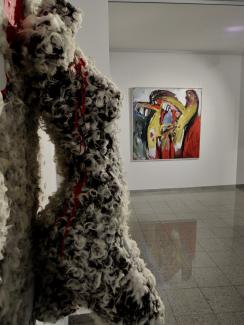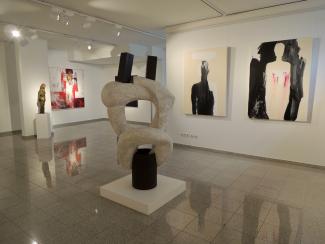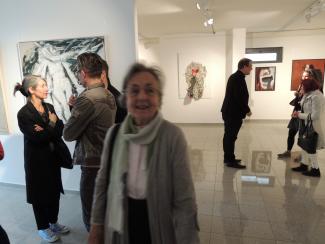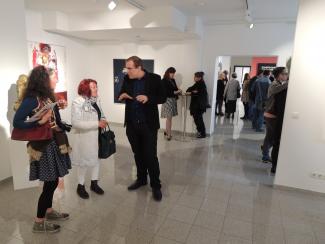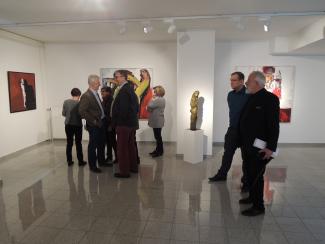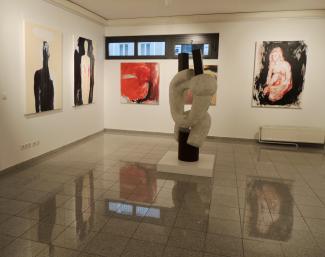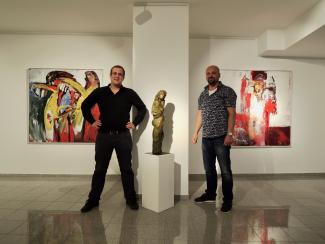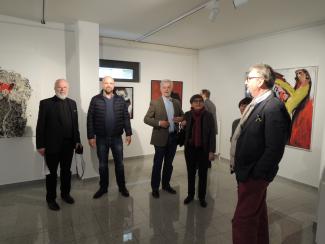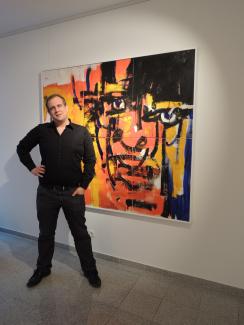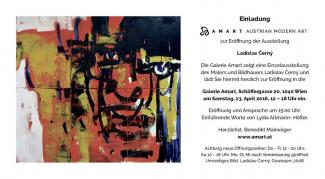Artistic introduction
AMART Gallery | Vienna, 23 April 2016
What expectations do you have of art? The composer Peter Ruzicka, for example, sees art as "an ever-renewable energy that counterbalances the mindless race. An aesthetic means of differentiation and sharpening of judgement". According to art critic Wolfgang Ullrich, "art is always successful when it helps us to perceive and interpret our everyday life a little 'anew' again." Georg Baselitz, the German painter and sculptor, speaks out "against lectures and appeals to morals as the task of art". And Mario Vargas Llosa, winner of the Nobel Prize for Literature, complains about "the increasing banalisation of art." In his opinion, art has become more and more entertainment, something to amuse oneself with for a while. ¹The question that arises: "Should or may one attach expectations to art at all?" "L'art pour l'art - the task of art is art" was the slogan of the avant-garde attitude to art at the end of the 19th century. Art should therefore be self-sufficient and free of purpose! A viewpoint that seems as simple as it is logical. However, the fact that the reverse conclusion is often drawn from this, that art is virtually obliged to withdraw from any criticism, again implies expectations: the artist as a refuser, as a revolutionary, as a vicarious agent, as a service provider ...
Whatever your opinion, Ladislav Cerny is certainly not an artist who flirts with expectations. He challenges us as viewers, triggers discussions, leaves questions open. Born on 2 November 1965 in Bratislava, Slovakia, Cerny studied first at the Academy of Fine Arts in Bratislava and then at the Academy in Dresden. His works have been shown in exhibitions in Slovakia, Great Britain, France, the Czech Republic, Hungary and Poland, among others. He is a member of three artist groups in Slovakia. In addition to the classical techniques of fine art: painting and sculpture, Cerny also devotes himself to object art. The Amart Gallery is the first Austrian gallery to present a cross-section of his artistic work of the past ten years in a solo exhibition. Although there is no such thing as a "typical Cerny work of art", as Benedikt Mairwöger, the gallery owner of Amart, rightly points out, there are nevertheless parameters that point to "his art". On the one hand, these are to be found in the motifs of his works, which reflect the human condition from the perspective of his very personal perception and feeling. On the other hand, we find them in his language of colour and form, which confronts us as viewers abruptly, in an expressive "weightiness" characteristic of Cerny. A directness that attracts the viewer, takes him over, but does not always open up access to him. A "Cerny work" is not created out of the need to decorate our tranquil home. A "C:erny work" is created for its own sake. It reflects the entire spectrum of his life, embedded between birth and inevitable death. This is where encounters, touches and relationships take place. Here love meets suffering and pain, sexuality meets morality and dying.
Even supposedly harmonious, interpersonal encounters, such as those in the paintings "Touch" and "Embrace", seem complicated in Ladislav C:erny's work. Thus, at first glance, the protagonists in "Touch" convey attentive rapprochement. As a result, however, a feeling of aloofness or even defensiveness arises. And the scene "Embrace", bathed in pastel pink, sometimes gives the impression of a struggle rather than a tender bond. C:erny's work is complex, tangled, entangled - never trivial and certainly not trivial. His image of "harmony" also poses riddles. What conception of harmony, we ask, is hidden behind that expressive colourfulness? In "Conscience" the symbolism is more transparent. Here, strong red-orange and bright yellow speak loudly as moral consciousness, as a sense of duty and guilt. White innocently delimits the picture surface and black is the face of truth.It is the colours, the contrasts and the power of the brushwork that signal to us weltschmerz. One becomes an artist out of despair," Ernst Ludwig Kirchner observed at the time. And Cerny? I haven't asked him yet. He probably leaves the answer open anyway ...
As in his painting, he also deals with all the imprints of our human existence in his sculptural work. Here, resistance and malleability, warmth and coldness are juxtaposed in the materials he uses, polygromed plaster and steel. In "Relationships", black steel breaks through the supposed bond, so that when we look at the ring-shaped sculpture, we abruptly go in search of the "end" of that relationship. Extraordinarily soulful his "Tartars". One is even tempted to question the work's authorship. But that too is Cerny: behind all monumentality and expressive directness lies sensitivity and vulnerability. It should be noted, however, that Ladislav Cerny certainly does not serve any aesthetic needs in any of his works. He does not allow superficial art consumption. He expects art from us! Here yellow collides with red, red with black and black with white: yellow symbolises liveliness in "Emergence" - black and red the suffering of "Pieta" - red is also death in "Crucifixion". And in between? In between, we encounter all conceivable moments of happiness and tragedies of life.
Galerie AMART
Schäffergasse 20
1040 Wien
Austria
